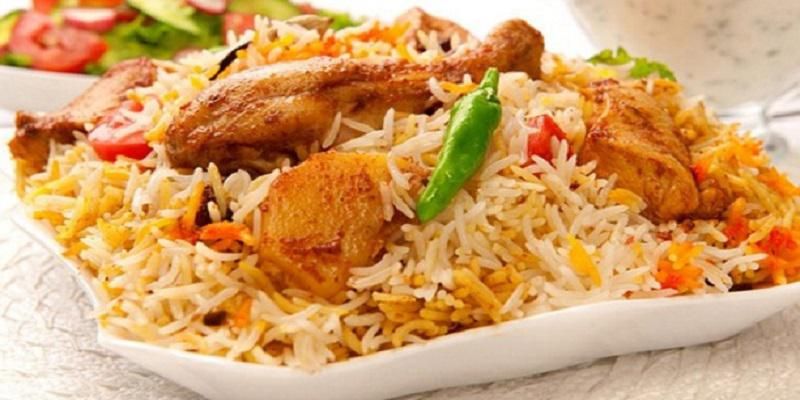The word Biryani is Hindi but is derived from birian, which comes from the Persian term, “barshtan to roast”, which translates to "fried before cooking". Simply put, Biryani is a spiced mix of meat and rice.
Notable historians have traced the roots of this dish to modern-day Persia. The biryani recipes were much simpler to keep them viable during travel. When the dish reached India, it was turned into something entirely packed with flavoursome food. According to legends, Mumtaz Mahal, the most beloved queen of Shahjahan, asked her barrack cook to cook something nutritious that had all the meat, rice, and spices to restore the need for energy in her army in the barrack. That is how this dish came to India. As a result, various regions across Southern Asia adopted this recipe. It grew and changed to express different cultural values leading us to the diverse selection of Biryani that exists today.
Components Required To Cook Biryani
Biryani mainly consists of rice, meat, marinade and spices. When we talk about Biryani, most people often prefer Best Basmati rice for cooking. But you can also choose another grain, such as super tibar or super dubar. You will always find regional differences in the types of meat you use in the dish. It depends upon which resources are readily available. For example, coastal regions of India are more likely to produce shrimps or fish biryani because shrimps and fishes are easily available. You will find more lamb or chicken Biryanis in other regions because of availability. Each type of meat is marinated in yoghurt, herbs and spices and kept overnight for marination.
Cooking Methods For Biryani:
Over the years, the methods to cook biryani have changed. However, three ways have always remained prominent
Dum: In a thick-bottomed pan, place raw marinated meat and parboiled rice, and it is sealed with dough and left to cook on low heat for hours.
Pukka: Here, rice and meat are cooked separately and then combined by each layer to steam.
Kacchi:Here, raw rice and raw meat are cooked together in a dum style.
Various Types Of Biryani:
There are constant variations in Biryanis, but few stand above the rest.
Hyderabadi Biryaniis a spicy flavorful dish focused on aromatic whole spice cardamom, saffron, cinnamon, clove, peppercorn, bay leaf, and dried red chillies. Hyderabadi Biryani can be cooked in two forms Pukka and Kacchi.
Dindigul Biryaniis served with jeera samba rice, small chunks of meat and lots of black pepper. It has the tangy flavor of lemon and curd. It usually has lamb or chicken incorporated with it.
Ambur Biryaniis a dish where meats are soaked in yoghurt or curd spice mixture before cooking and then cooked with the exciting addition of mint and coriander. It is cooked with short-grained rice.
Lucknowi Biryani originated from Northern India, also known as Awadhi Biryani spices used like star anise, cinnamon, and saffron. It is a celebration dish cooked in Dum style.
Kolkata Biryanioriginated from Kolkata, flavored with mild spices, rice and spicy chicken.
Sindhi Biryanihas boiled potatoes, and its bold flavors are from chillies and spices.
Memoni Biryaniis made with potatoes, chiles, and spices but typically also uses lamb and tomatoes. It is similar to Sindhi Biryani.
Malabar Biryani comprises green chiles paste, cinnamon, cloves, fennel, cardamom, and peppercorns.
It belongs to the Malabar region of Kerala.
Thalassery Biryani uses short grain rice instead of long grain. It uses roasted cashews for a nutty flavour. Also belongs to another popular Kerala dish.
Every Biryani is remarkable because of its unique twist.
Which Rice Is Best For Biryani?
There are many options to choose from when you are shopping for rice. Mostly long grain rice or Basmati are preferred to cook for Biryani.
What Do You Eat Biryani With?
Biryani itself is a whole nutrient or complete meal. But if you like, you can serve it with Raita. It is another Indian yoghurt dish with chopped cucumber or other veggies and spices.
Biryani has been satiating hunger for centuries. A world-renowned dish, biryani takes time and practice to make, but it's worth every bit of the effort. It's a complete meal in itself; biryani has enough varieties to please one and all. Biryani suits a wedding or a lazy weekend dinner, formal lunch, festival, or small get-together on all occasions. Rich or poor, everyone loves to eat biryani. Biryani truly is a culinary heritage of India.

















